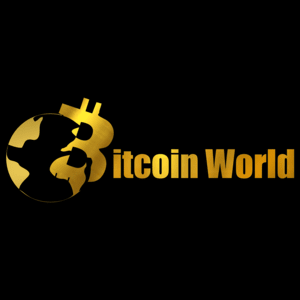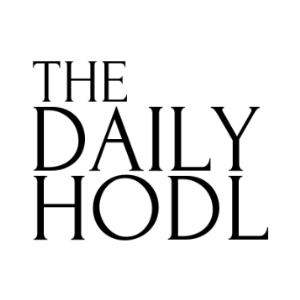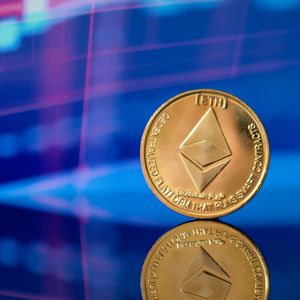Goldman Sachs Crypto: Giant Bank Reveals Bold Expansion Plans
4 min read
The world of finance is witnessing a seismic shift, and traditional giants are increasingly stepping into the arena of digital assets. Recent news from TOKEN2049 in Dubai highlights a significant move by one of the most prominent names in banking: Goldman Sachs. If you’re interested in the evolving relationship between Wall Street and cryptocurrencies, this development signals a major acceleration in institutional crypto adoption. Goldman Sachs Crypto: What’s Driving the Expansion? According to Mathew McDermott, Goldman Sachs’ global head of digital assets, the firm is set to significantly broaden its involvement in the cryptocurrency space. Speaking at the high-profile TOKEN2049 event, McDermott indicated that the bank is not just dipping its toes but planning a deeper dive into various crypto-related activities. The primary driver behind this expansion is clear: client demand. McDermott noted that a growing number of Goldman Sachs’ clients are expressing a strong desire for greater engagement with crypto markets. This isn’t just casual interest; clients are actively seeking the bank’s expertise and infrastructure to navigate the complexities of digital assets. This push from the institutional side is a critical factor influencing Goldman Sachs’ strategy. Broadening Horizons: Where is Goldman Sachs Focusing? The expansion isn’t limited to a single area. Goldman Sachs is reportedly targeting several key pillars within the crypto ecosystem: Expanding Crypto Trading: The firm already has some presence in crypto derivatives trading, particularly Bitcoin futures. The announcement suggests an intent to potentially increase the volume, range of assets, or types of trading services offered to clients. Increased crypto trading activity by a major bank like Goldman Sachs could bring more liquidity and sophistication to the market. Increasing Investment in Crypto-Based Lending: Crypto lending involves using digital assets as collateral for loans, or lending out crypto holdings to earn yield. While this area faced challenges in recent market downturns, institutional interest in regulated and secure lending platforms remains. Goldman Sachs’ investment here could involve developing their own platforms or partnering with existing compliant providers. Boosting Tokenization Efforts: Tokenization is the process of issuing a digital token on a blockchain that represents ownership of an underlying asset. This could be anything from real estate and art to traditional financial instruments like bonds or equities. Goldman Sachs has been exploring tokenization for some time, particularly for facilitating faster and more efficient settlement of traditional assets. This expansion suggests a commitment to making tokenized assets a more integral part of their offerings. These areas represent different facets of the digital asset landscape, indicating a comprehensive approach rather than a narrow focus. Why Does Goldman Sachs’ Move Matter for Digital Assets? Goldman Sachs is a titan of the traditional financial world. Their increased commitment to digital assets sends a powerful signal to the broader market. Here’s why this is significant: Validation: A major institution like Goldman Sachs expanding its crypto activities lends further legitimacy to the digital asset space. It suggests that they view crypto not just as a speculative novelty but as an evolving asset class with potential for institutional integration. Increased Liquidity and Capital: Greater involvement from firms like Goldman Sachs can bring substantial institutional capital and trading volume into the crypto markets, potentially increasing liquidity and reducing volatility over time. Development of Infrastructure: As traditional finance players enter the space, they often demand and help build robust, compliant, and scalable infrastructure for trading, custody, and settlement of digital assets. Regulatory Clarity: Institutional engagement often goes hand-in-hand with calls for clearer regulatory frameworks. Goldman Sachs’ push could indirectly contribute to the development of more defined rules for the crypto market. Driving Institutional Crypto Adoption: This move is a prime example of the accelerating trend of institutional crypto adoption. As more banks and financial institutions offer crypto services, it becomes easier and more attractive for pension funds, asset managers, and corporations to enter the space. The Path Forward: Challenges and Opportunities While the expansion is a positive sign for the digital asset ecosystem, challenges remain. Regulatory uncertainty continues to be a major hurdle globally. Navigating different jurisdictions’ rules on crypto trading, lending, and tokenization requires significant legal and compliance efforts. Market volatility is another factor that traditional institutions must manage carefully. However, the opportunities are substantial. Tokenization, in particular, holds the potential to revolutionize capital markets by making assets more divisible, accessible, and easier to trade. Expanding crypto trading and lending services allows Goldman Sachs to meet existing client demand and potentially attract new clients looking for integrated financial and digital asset services. Looking Ahead: What Does This Mean for Investors? For individual investors, the increasing involvement of major banks like Goldman Sachs could have several long-term implications: More Mature Market: Increased institutional participation could contribute to a more mature and stable market environment over time. Potential for New Products: As banks develop expertise, they may eventually offer new types of crypto-related investment products accessible to a wider range of investors. Improved Infrastructure: The development of institutional-grade infrastructure benefits the entire ecosystem, potentially leading to more reliable platforms and services. Goldman Sachs’ strategic decision to expand its digital assets footprint, driven by strong client demand, marks a significant moment in the convergence of traditional finance and the crypto world. Their focus on expanding crypto trading, increasing investment in crypto-based lending, and boosting tokenization efforts underscores a long-term vision for integrating digital assets into their core business offerings. This move not only validates the growing importance of cryptocurrencies but also paves the way for further institutional crypto adoption and the potential transformation of financial markets through tokenization. To learn more about the latest crypto market trends , explore our article on key developments shaping institutional crypto adoption and the future of digital assets .

Source: Bitcoin World



